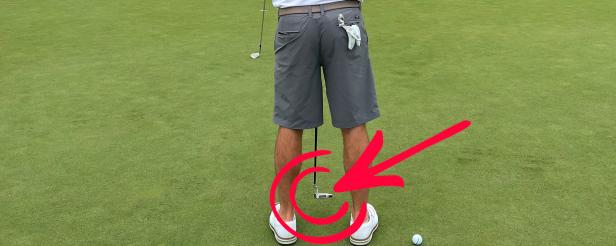Golf
This clever loophole is a legal way of reading greens—and pros are using it at the 2024 U.S. Open

PINEHURST, N.C.—Pinehurst greens are scary. They’re firm, fast, and they slope severely in every direction, which makes the greens play smaller than they appear.
With so many slopes in play at any given moment, it means pros are going to spend all week grinding over long lag putts and high-pressure short putts—both of which will put a premium on good green-reading.
It was evident on the ground on Monday morning. Pros were busy on the practice putting green, trying to prepare themselves for the challenge ahead.
Lots of pros use a green-reading system called AimPoint which, oversimplified, is when you feel the severity of the slope with your feet, and can help determine exactly how much the putt will break.
One common way you’ll see pros practice this is to use a level on the practice putting green. They’ll set the level on a flat spot, then on one, two, or three percent slopes, and focus on feeling the difference between the various degrees. Pros aren’t allowed to use the level on the course, but it’s a good way of dialing-in their feel on the practice green.
But recently, some pros have started making a clever alteration to their method. Rather than using the level to find the slope, and practicing feeling the slope, they’re actually able to measure it. Joel Dahmen and Tom Hoge are two early adopters—they’re students of putting instructor Ralph Bauer, who runs the Tour Read putting app—and yes, it’s fully legal. It’s a loophole of sorts, but a legal one.
As you go through this process, you’ll find that gravity will pull the putter shaft in the direction of the slope to varying degrees based on the slope. The more slope, the more gravity will pull the putter to the side.
As Ralph demonstrates below.
The ruler is there to measure how far off-center the putter falls on different putts. I tried calibrating it on my own putter yesterday, and found my TaylorMade Spider putts falls about 0.5 inches per degree of slope. I’m standing on a two percent slope to the left below, and you can see my putter move an inch to my left.
“It takes about 10 minutes to calibrate, and then once you understand what your putter does, you’ll know until you decide to switch putters again,” Bauer says.
When you’re on the golf course, you do the same thing: Dangle your putter, pick a spot on the ground, and see how much your putterhead moves off that spot.
Yes, you need to still have about the same stance width every time, hold your putter in the same spot every time, and you’ll need to eyeball the distance the putterhead moves.
It still requires judgement calls, but personally, I feel more comfortable judging whether something is an inch or two, rather than judging whether something feels like a half a percent slope more or less in my feet.
If nothing else, it also takes the literal direction out of the question. If you’re not sure if the ball breaks left, or right, then dangle your putter. Whichever way the putter moves, that’s the direction of the slope.
“That’s actually very clever,” one coach said on the ground at Pinehurst, “It’s a bit like plumb-bombing.”
Don’t be surprised to see this catch more on tour in the future. Maybe even this week.


)






